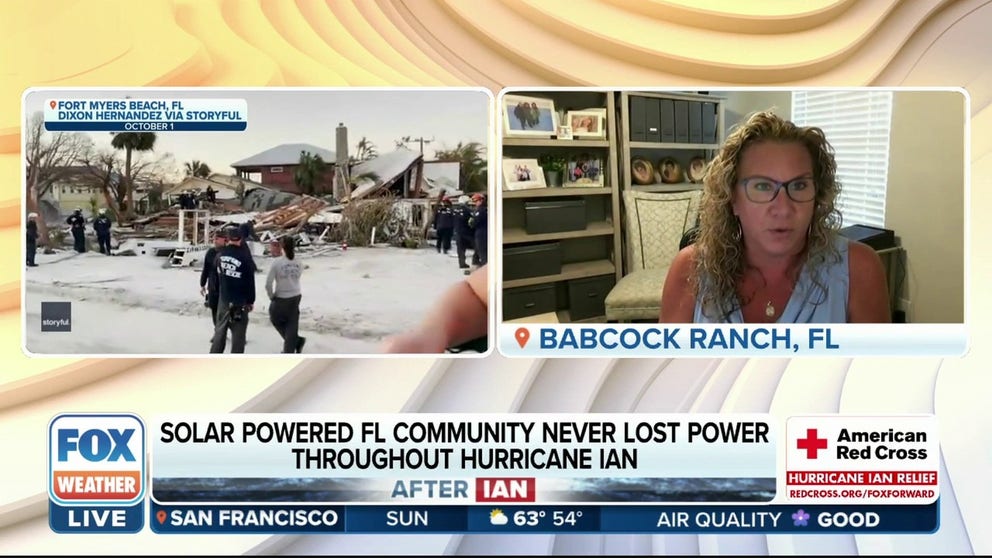‘America’s first solar powered town’ passes Hurricane Ian test
A new town, which it’s developers call “America’s fist solar-powered town,” sits less than 30 miles away from where the Category 4 storm made landfall and never lost power.
Solar-powered community never lost electricity during Hurricane Ian
Hurricane Ian knocked out power to millions of utility customers in Florida, but one community was able to keep the lights on during the storm thanks to solar power.
BABCOCK RANCH, Fla. – The neighborhood of the future passed a major test on September 28, Hurricane Ian. Developers purchased the open land in 2006 and hired teams of engineers to create "storm safety, resilient by design," according to their website.
Residents are now believers after Hurricane Ian gusted over 150 mph and dropped feet of rain on the community. Those who rode out the powerful storm never lost power. The story was very different for over 13 million of their Florida neighbors, some of whom are still in the dark.
How did the power stay on?
"In Babcock Ranch, we actually have transmission lines running from the solar array directly to a substation here," Jennifer Languell, Engineer and consultant for Babcock Ranch explained. "Florida Power and Light has already hardened that infrastructure."
EXTREME WEATHER IS DRIVING THE NEED TO DIVERSIFY AMERICA'S POWER GRID
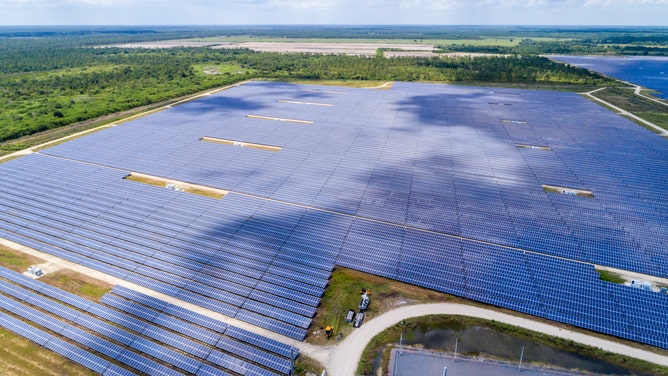
Florida, Babcock Ranch, aerial of large photovoltaic power station.
(Jeffrey Greenberg/Education Images/Universal Images Group / Getty Images)
FP&L, the utility company partnered with developers and together built and operate the 870-acre solar farm. Lines run underground through the community so wind, falling trees and blowing debris will never take down power lines.
The hardened infrastructure Languell said, are large concrete poles connecting the ranch to the rest of state. Even when there is no sun to charge the panels, the ranch has electricity.
"At night, we are fed by a natural gas plant, so Florida Power and Light again feeds us from a different direction in the evenings," Languell explained. "Or if for some reason the solar array isn't generating what we need. So that builds in part of the resilience, having multiple sources where we're getting our energy from."
In March 2018, the Babcock Ranch Solar Energy Center was the largest solar-plus-storage project operating in the U.S., according to the company’s website.
WHY SOME POWER COMPANIES SHUT OFF ELECTRICITY AHEAD OF A HURRICANE
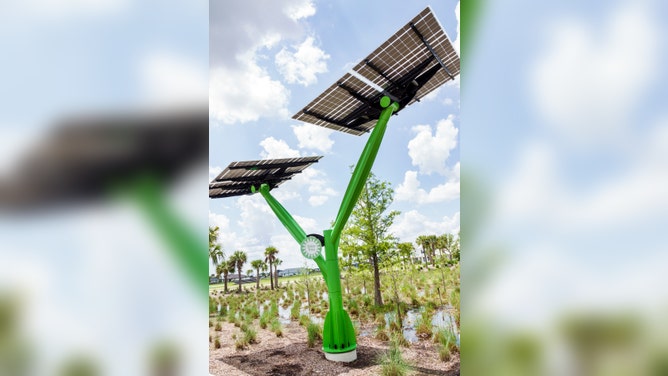
Planners 'planted' solar panel trees across the neighborhood for people to charge their devices through.
(Jeffrey Greenberg/Education Images/Universal Images Group / Getty Images)
"We call ourselves a living laboratory. And so we're testing different types of batteries," she said. "The technology is evolving very quickly on batteries, and we will continue to test and then grow our storage capabilities."
What makes the town storm resilient?
In 2017 residents started moving into the community which is 18,000 acres of residential, commercial and retail space. Planners set aside another 73,000 acres for a preserve. They selected the site 30 miles inland and about 30 feet above sea level to maximize protection from the wrath of Florida’s weather.
The town lies about 15 miles east of downtown Fort Myers.
Languell said that since the community is relatively new, homes and infrastructure were and are being built to new building codes. Lessons learned after deadly hurricanes like Andrew and Wilma beefed up wind resistance.
A BIRD'S EYE VIEW OF THE DESTRUCTION ON SANIBEL ISLAND AFTER IAN
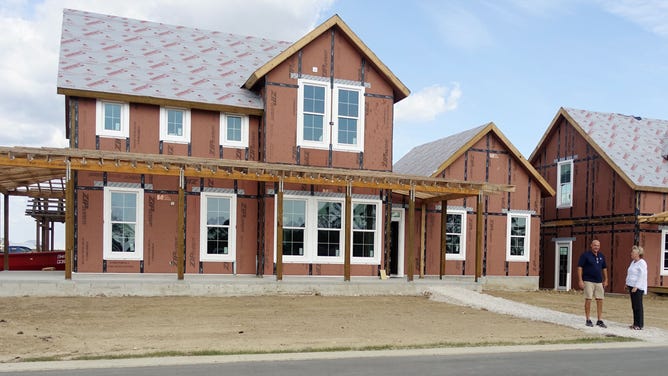
Builders said they chose engineered wood and Styrofoam materials to build Babcock Ranch homes with saying they were more hurricane resistant than traditional cinder block. Eventually 50,000 people will call the ranch home.
(KERRY SHERIDAN/AFP / Getty Images)
Data on the news release says homes are safe to a Category 3 hurricane. Ian was Category 4.
The large preserve and the use of native plants also reduce storm runoff and flooding. Native plants evolved with Florida’s tropical weather and are less susceptible to the extreme conditions.
The ranch has its own self-contained water and wastewater management system.
HOW TO WATCH FOX WEATHER ON TV
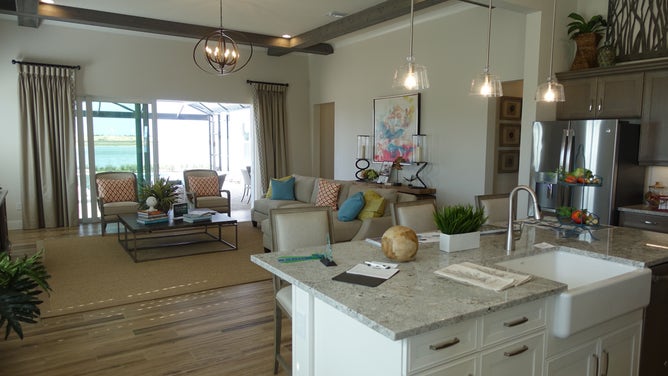
Homes in the neighborhood of the future, like this one, hit the market in March 2017. Realtors say home prices were about twice that of an average home in the area.
Languell says she is also working with the state to harden older neighborhoods.
"I'm already working with the Department of Economic Opportunity on the Irma rebuilds and the Michael rebuilds, which are two previous storms," she said. "And we are building those to meet Florida green building codes and certification standards, which takes building code and bumps it up a little bit."
Languell has won awards for her work in sustainable buildings, land management and land development worldwide.
